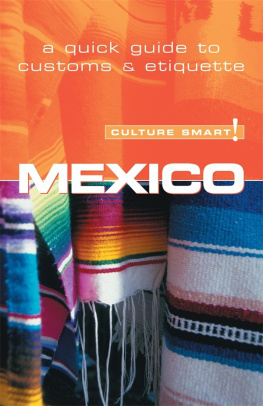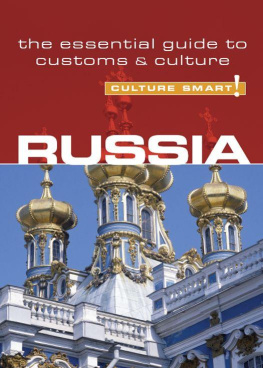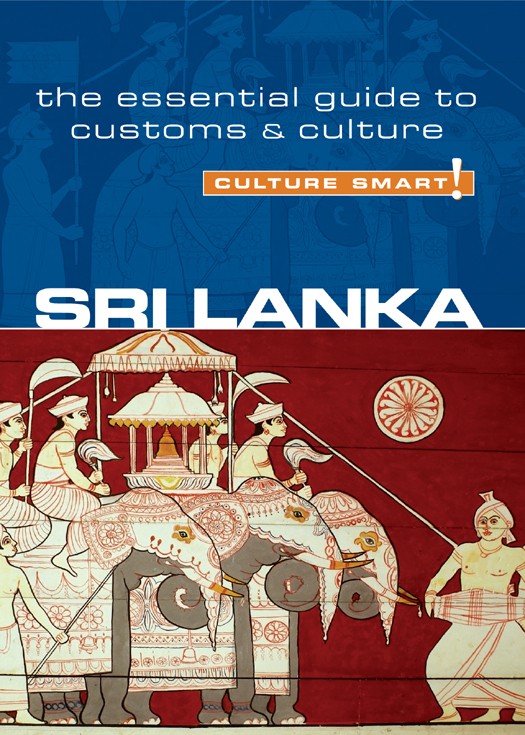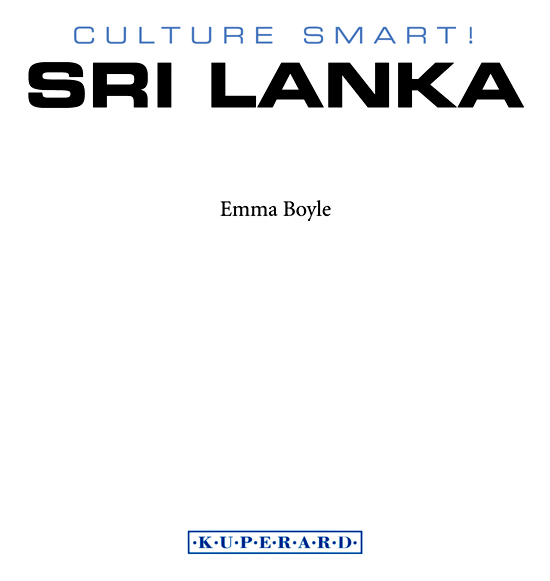First published in Great Britain 2009
by Kuperard, an imprint of Bravo Ltd
59 Hutton Grove, London N12 8DS
Tel: +44 (0) 20 8446 2440 Fax: +44 (0) 20 8446 2441
www.culturesmart.co.uk
Inquiries:
Culture Smart! is a registered trademark of Bravo Ltd
Copyright 2009 Kuperard
All rights reserved. No part of this publication may be reprinted or reproduced, stored in a retrieval system, or transmitted in any form or by any means without prior permission in writing from the publishers.
Series Editor Geoffrey Chesler
eISBN: 978-1-85733-624-5
British Library Cataloguing in Publication Data
A CIP catalogue entry for this book is available from the
British Library
Images on by courtesy of the author.
Images on the following pages by courtesy of Sri Lanka Tourism: Martin Sewell
Images on (bottom) Symphoney Symphoney.
v3.1
About the Author
EMMA BOYLE is a British journalist and photographer who has lived in Sri Lanka since 2003. After graduating from Liverpool University in Philosophy and Politics she took a year out to travel, during which time she wrote for a variety of publications as she made her way around the world. Sri Lanka was the last stop on her journey, and it was to this country that she came back to pursue her passions of writing and photography. Emma now lives on the south coast of Sri Lanka with her Sri Lankan partner. She continues to contribute travel-related articles to a range of national and international magazines, publications, and newspapers, which have included The Sunday Times travel magazine and the Sri Lankan and Emirates in-flight magazines, and provides brochure and Web copy for the international travel company In Style.
The Culture Smart! series is continuing to expand.
For further information and latest titles visit
www.culturesmart.co.uk
The publishers would like to thank CultureSmart!Consulting for its help in researching and developing the concept for this series.
CultureSmart!Consulting creates tailor-made seminars and consultancy programs to meet a wide range of corporate, public-sector, and individual needs. Whether delivering courses on multicultural team building in the USA, preparing Chinese engineers for a posting in Europe, training call-center staff in India, or raising the awareness of police forces to the needs of diverse ethnic communities, it provides essential, practical, and powerful skills worldwide to an increasingly international workforce.
For details, visit www.culturesmartconsulting.com
CultureSmart!Consulting and CultureSmart! guides have both contributed to and featured regularly in the weekly travel program Fast Track on BBC World TV.
contents
Map of Sri Lanka
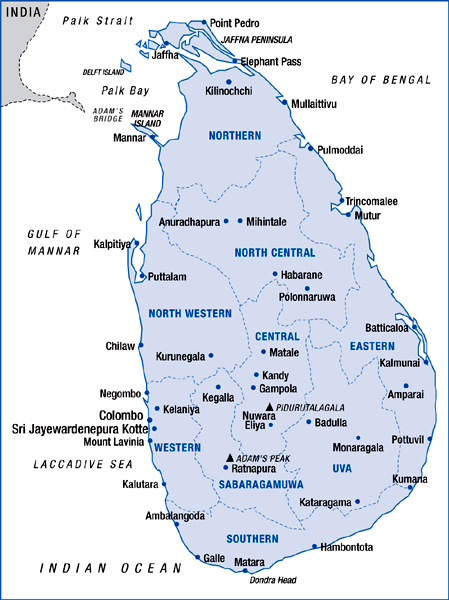
introduction
The pearl of the Indian Ocean; the land of serendipity; Taprobane: Sri Lanka has been known by various evocative names over the centuries, and has been fought over and freed from many an invasive power intent on controlling the islands rich natural resources and advantageous geographical position. The influences of foreign powers, especially European, have enriched Sri Lankan culture and are ever visible facets in both the physical aspects of the country and the mentality of the people.
Sri Lanka is renowned for its golden beaches, beautiful Buddhist temples, and excellent Ceylon tea, but it is just as famous for a crushing civil war that over the last thirty years has continued to unnerve a nation already divided by religion, ethnicity, and language. What prospective visitors might not know is that the country continues to function normally, despite the conflict in the north; rather than fall victim to its destabilizing presence Sri Lankans are resilient. They have learned to live and work harmoniously alongside one another away from the conflict zones and recognize the value of each others individuality.
While urban centers are characterized by frantic development, multinational businesses, and a competitive telecommunications market, the countrys pace of change has been severely dampened by the civil war, to the extent that many rural areas have remained ensconced in a much earlier period of Sri Lankas history. Many ingrained cultural traditions, especially in the most rural areas, have had little influence from the outside world, resulting in their natural and effortless preservation.
Sri Lanka shares many attributes with its South Asian neighbors, but the fact of its having one of the highest literacy rates in the region has resulted in a politically conscious, interested, and engaging people who take great pride in their country. Sri Lankans are genuinely friendly, welcoming, and cheerful people who take great pleasure in hosting Westerners who respect their culture. Loyalty is highly valued, and relationships are considered more important than time or money.
Culture Smart! Sri Lanka outlines the countrys diverse and complex history, and unearths the forces that have shaped its sensibility and development over the years. It considers the multiethnic character of the country, and by touching on every aspect of life explains how this has formed the values and attitudes of the people. Offering an insight into how Sri Lankans interact with each other, both at home and in the workplace, and relating what they like to do and where they like to go, this book will enrich your visit to the island. Whether you come for business or for pleasure, you are sure to have a meaningful and memorable stay.
Key Facts
| Official Name | Democratic Socialist Republic of Sri Lanka |
| Capital City | Colombo. Population 653,000 (2003 est.) | Legislative capital: Sri Jayewardenepura Kotte |
| Main Cities | Kandy, Matara, Galle |
| Area | 25,332 sq. miles (65,610 sq. km) Similar in area to West Virginia |
| Climate | Tropical monsoon. OctoberMarch: northeast monsoon. MaySeptember: southwest monsoon. Heavy rain showers interspersed with periods of sunshine | The Hill Country has year-round rainfall. Temps. vary with altitude. |
| Land Use | Three-quarters of pop. live in rural villages; many are farmers. Arable land 14%; permanent crops 15%; protected parks and reserves 14%; other 43%. | Produce incls. tea, rice, sugarcane, coconuts, spices, rubber, grains, pulses, and fish. |
| Currency | Sri Lankan Rupee (Rs) At time of writing US $1 = Rs 107; 1 GBP = Rs 212. | The rupee is made up of 100 cents. One lakh = 100,000 rupees. The highest note is Rs 2,000. |
| Population | 21,228,773 (2008 est.) |
| Ethnic Makeup | Sinhalese 74%; Sri Lankan Tamils 12%; Muslim 7.5%; Indian Tamils 5.5%; others (e.g. Veddah, Burgher, Malay) 1% |
| Age Structure | 014 years 24.1% 1564 years 68% 65+ years 7.9% |


